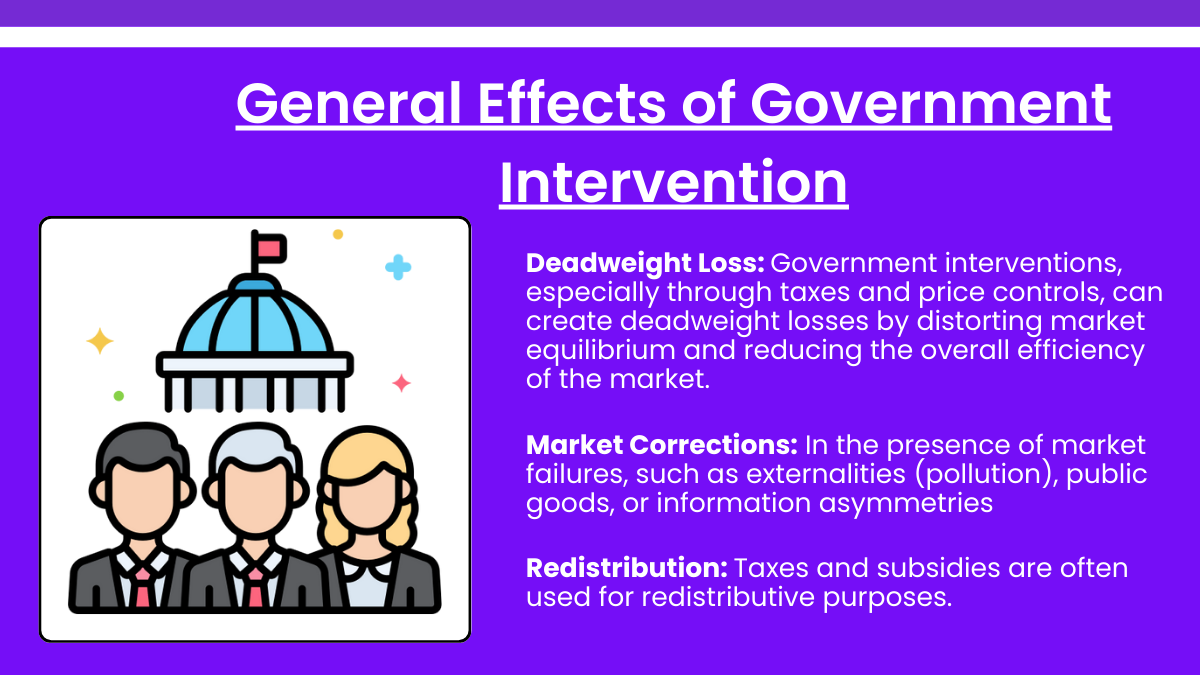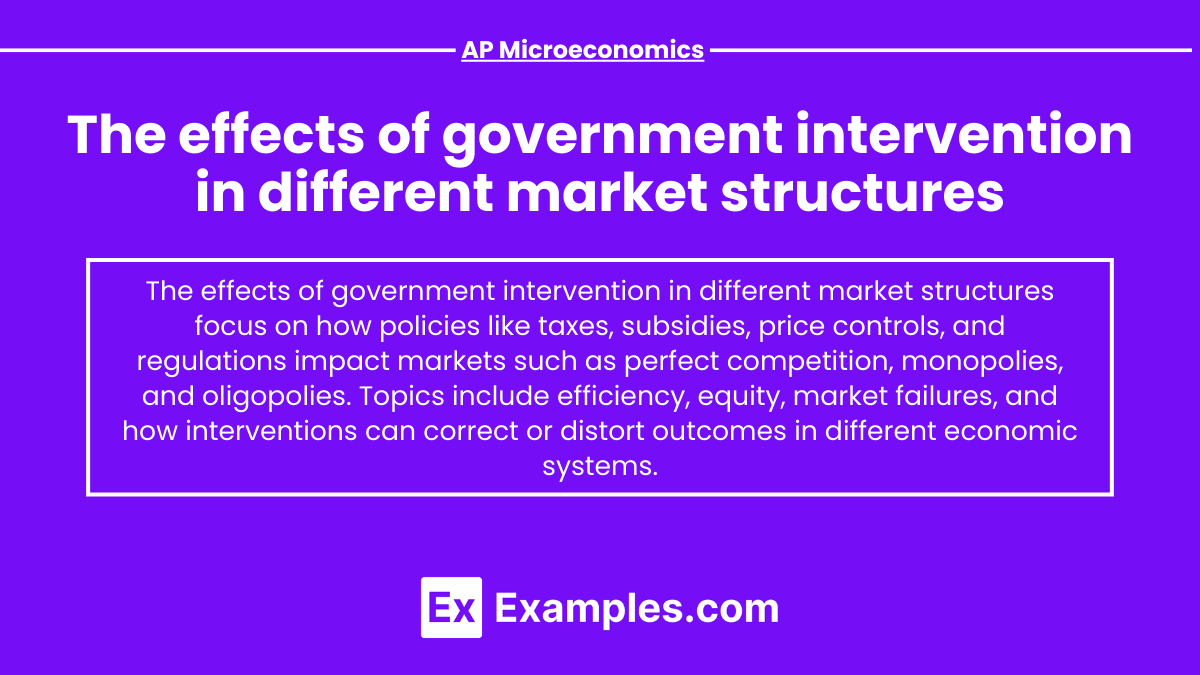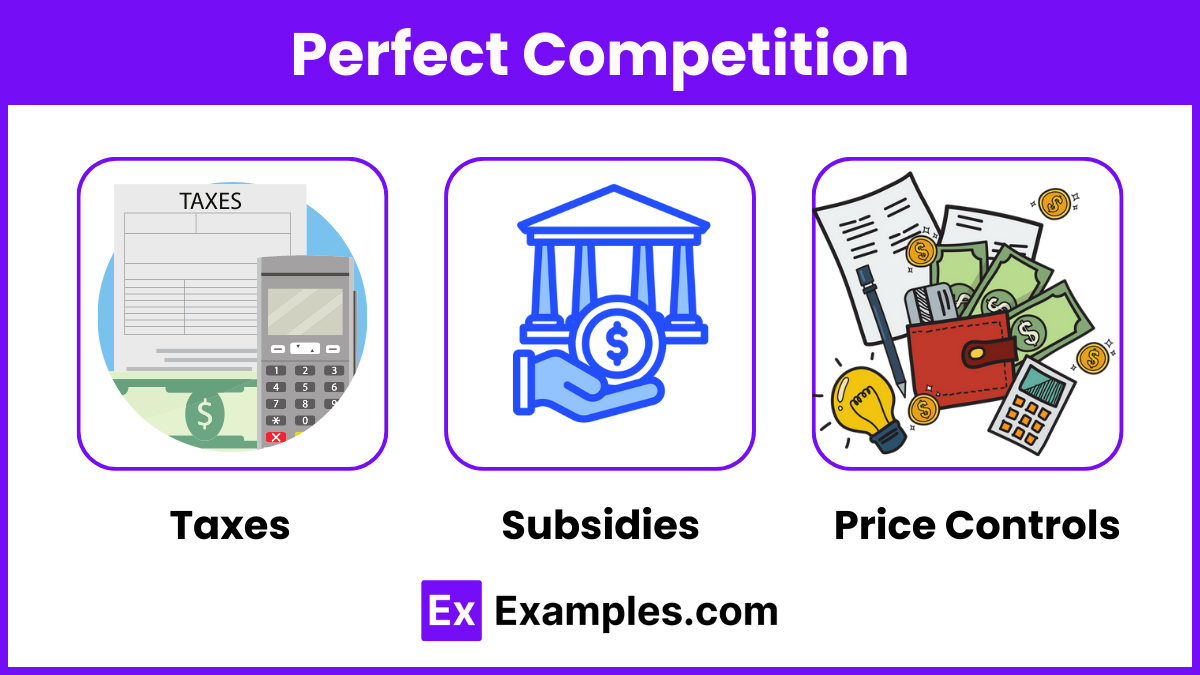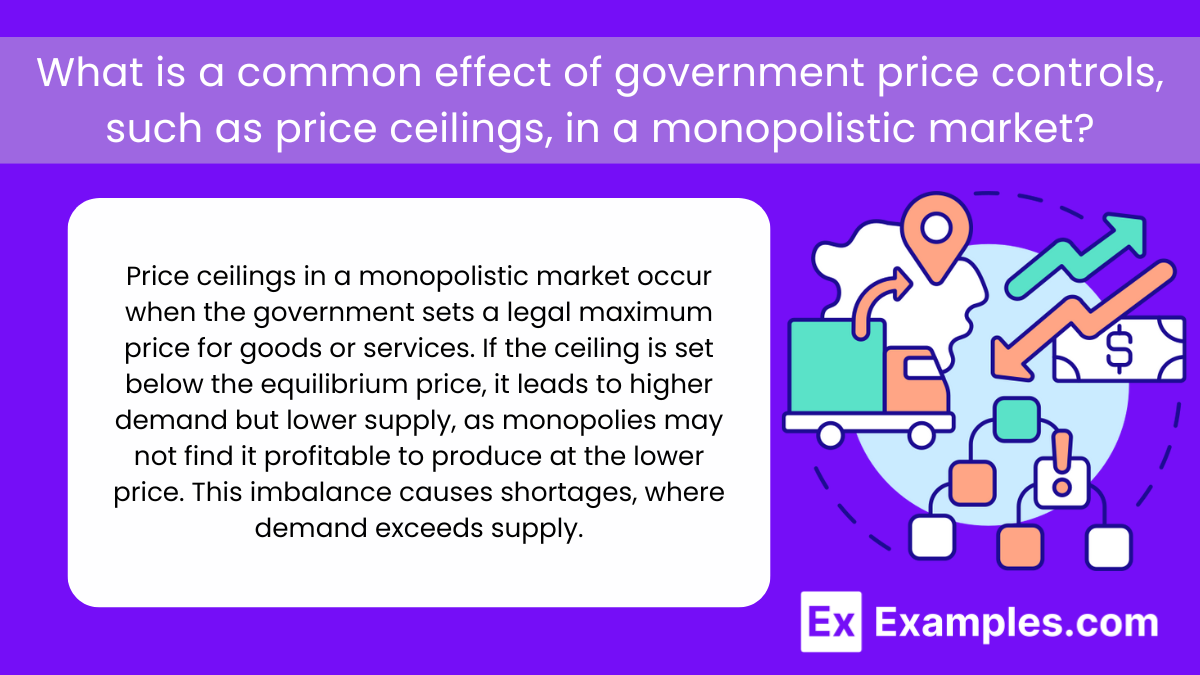Government intervention in market structures such as perfect competition, monopolies, and oligopolies aims to correct inefficiencies, regulate prices, and promote fair competition. This intervention can take the form of taxes, subsidies, price controls, and regulations. While often intended to improve market outcomes, it can also lead to unintended consequences like deadweight loss or overproduction, depending on the market structure.
Free AP Microeconomics Practice Test
Learning Objectives
In studying "The Effects of Government Intervention in Different Market Structures" for AP Microeconomics, you should learn to identify how government actions, such as price controls, taxes, subsidies, and regulations, impact various market structures, including perfect competition, monopolistic competition, oligopoly, and monopoly. Analyze how interventions can correct market failures, address inefficiencies, or create unintended consequences, such as deadweight loss or distorted incentives. Evaluate the effectiveness of these policies in promoting social welfare, ensuring fair competition, or protecting consumers. Additionally, explore real-world examples to understand the broader economic and social impacts of government intervention across different markets.
1. Perfect Competition
In a perfectly competitive market, many firms sell identical products, and prices are determined by supply and demand. Government intervention typically aims to correct market failures, such as externalities or public goods.
Taxes: A per-unit tax shifts the supply curve upward (left), raising prices and reducing quantity. This creates a deadweight loss, as the market no longer operates at the efficient level of output. Consumers and producers both bear the burden of the tax.
Subsidies: Subsidies lower the production cost, shifting the supply curve downward (right), leading to lower prices and higher quantities. While subsidies increase producer and consumer surplus, they often result in overproduction relative to the efficient outcome.
Price Controls: Price ceilings (maximum prices) below equilibrium cause shortages, as demand exceeds supply. Price floors (minimum prices) above equilibrium, such as minimum wages, result in surpluses or unemployment.
2. Monopoly
A monopoly has market power to set prices above marginal costs, resulting in higher prices and lower quantities compared to perfect competition.
Taxes: A tax on a monopolist increases marginal costs, reducing output and raising prices further, exacerbating the welfare loss already present in a monopoly. However, the monopolist might not pass the entire tax burden onto consumers.
Regulation: Governments often intervene in monopolies by regulating prices or breaking up monopolies (antitrust laws). Price regulation can force monopolists to produce at a more socially optimal level (closer to marginal cost pricing), increasing consumer surplus and reducing deadweight loss.
Subsidies: Subsidies reduce production costs and can encourage more output, but the monopolist may not fully pass these benefits onto consumers.
3. Monopolistic Competition
In monopolistic competition, many firms sell differentiated products. Firms have some price-setting power, but there is still competition in the market.
Taxes: Like in perfect competition, taxes on firms raise prices and reduce output, leading to deadweight loss. However, since monopolistically competitive firms already produce below the efficient output, the welfare impact might be larger.
Subsidies: Subsidies could lower costs and increase output. However, due to product differentiation, the impact may vary across firms, and the market still might not reach full efficiency.
Regulation: Government regulation in these markets often focuses on preventing false advertising or ensuring fair competition rather than direct price control.
4. Oligopoly
Oligopolies consist of a few firms that dominate the market. These firms may collude to set prices or quantities, leading to inefficiencies similar to monopolies.
Taxes: Taxes on oligopolistic firms increase costs, which could lead to higher prices and reduced output, depending on how the firms respond. The level of competition (or collusion) between firms influences the overall effect.
Antitrust Laws: Government intervention often targets oligopolies through antitrust laws to prevent collusion or price-fixing. Breaking up firms or preventing mergers ensures more competition, benefiting consumers through lower prices and more innovation.
Subsidies: Subsidies may increase output and lower prices, but the effects depend on how the firms interact. Colluding firms may not pass on the benefits fully to consumers.
5. General Effects of Government Intervention

Deadweight Loss: Government interventions, especially through taxes and price controls, can create deadweight losses by distorting market equilibrium and reducing the overall efficiency of the market.
Market Corrections: In the presence of market failures, such as externalities (pollution), public goods, or information asymmetries, government intervention can correct inefficiencies and improve societal welfare.
Redistribution: Taxes and subsidies are often used for redistributive purposes, shifting surplus from producers or high-income consumers to low-income consumers, though this can lead to reduced efficiency.
Examples
Example 1: Taxes on Monopolies
Government-imposed taxes on monopolies increase production costs, leading to higher prices and reduced output, exacerbating inefficiencies and deadweight loss, while potentially limiting monopolistic power.
Example 2: Subsidies in Perfect Competition
Subsidies reduce production costs for competitive firms, increasing output and lowering prices, but can result in overproduction and inefficiency, distorting the optimal market equilibrium.
Example 3: Price Ceilings in Rent-Controlled Markets
Rent control, a price ceiling below equilibrium, creates housing shortages by limiting supply, as demand exceeds available rental properties, leading to inefficiency in housing markets.
Example 4: Antitrust Regulation in Oligopolies
Antitrust laws prevent collusion between oligopolistic firms, promoting competition, reducing prices, and improving consumer welfare, though firms may still attempt to coordinate their behavior.
Example 5: Public Utility Regulation in Natural Monopolies
Regulation of natural monopolies like electricity ensures fair pricing and sufficient supply while preventing exploitation, as governments regulate prices to prevent monopolistic abuse in essential services.
MCQs
Question 1
What is a common effect of government price controls, such as price ceilings, in a monopolistic market?
A) Increased production by the monopoly
B) Shortages of goods or services
C) Surplus of goods or services
D) Elimination of monopoly power
Answer: B) Shortages of goods or services
Explanation: Price ceilings in a monopolistic market occur when the government sets a legal maximum price for goods or services. If the ceiling is set below the equilibrium price, it leads to higher demand but lower supply, as monopolies may not find it profitable to produce at the lower price. This imbalance causes shortages, where demand exceeds supply.
Question 2
What is the primary reason for government regulation in natural monopolies?
A) Increase competition
B) Prevent price-fixing
C) Ensure fair pricing
D) Encourage collusion
Answer: C) Ensure fair pricing
Explanation: Government regulates natural monopolies to prevent price exploitation by ensuring fair pricing, as these monopolies naturally dominate due to cost advantages in production.
Question 3
How do subsidies affect firms in a monopolistically competitive market?
A) Decrease output
B) Increase production costs
C) Increase output and lower prices
D) Lead to shortages
Answer: C) Increase output and lower prices
Explanation: Subsidies reduce production costs, allowing firms to increase output and lower prices, improving consumer surplus but possibly resulting in overproduction.







